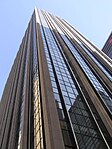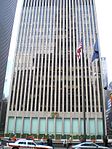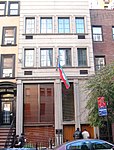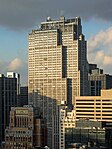50th Street station (IRT Sixth Avenue Line)
50th Street was a station on the demolished IRT Sixth Avenue Line in Manhattan, New York City. It had two tracks and two side platforms. It was served by trains from the IRT Sixth Avenue Line and opened on June 5, 1878. It closed on December 4, 1938. The next southbound stop was 42nd Street. For some trains, the next northbound stop was 58th Street Terminal until 1924, while for other trains, the next northbound stop was Eighth Avenue. For express trains, the next northbound stop was 66th Street on Ninth Avenue. Two years later after the station closed, it was replaced by the nearby underground 47th–50th Streets–Rockefeller Center (IND Sixth Avenue Line) subway station.
Excerpt from the Wikipedia article 50th Street station (IRT Sixth Avenue Line) (License: CC BY-SA 3.0, Authors).50th Street station (IRT Sixth Avenue Line)
Rockefeller Plaza, New York Manhattan
Geographical coordinates (GPS) Address Phone number Website Nearby Places Show on map
Geographical coordinates (GPS)
| Latitude | Longitude |
|---|---|
| N 40.759875 ° | E -73.980436111111 ° |
Address
Rockefeller Center
Rockefeller Plaza 45
10111 New York, Manhattan
New York, United States
Open on Google Maps







